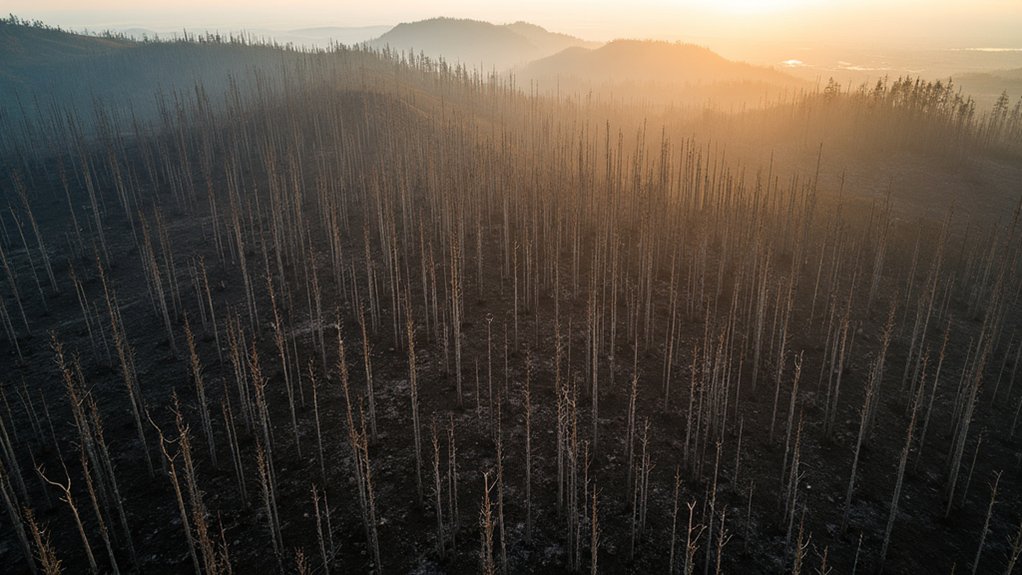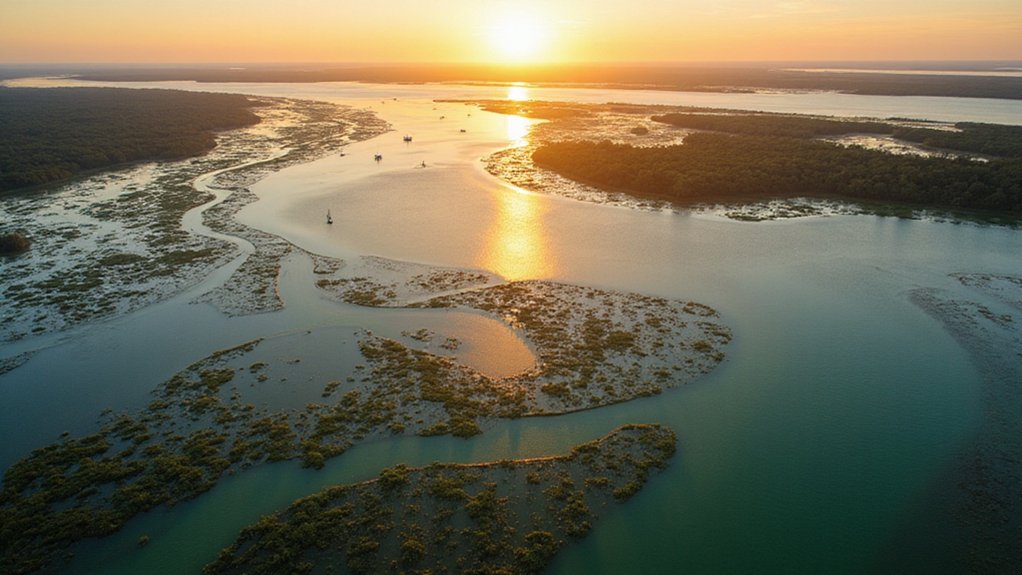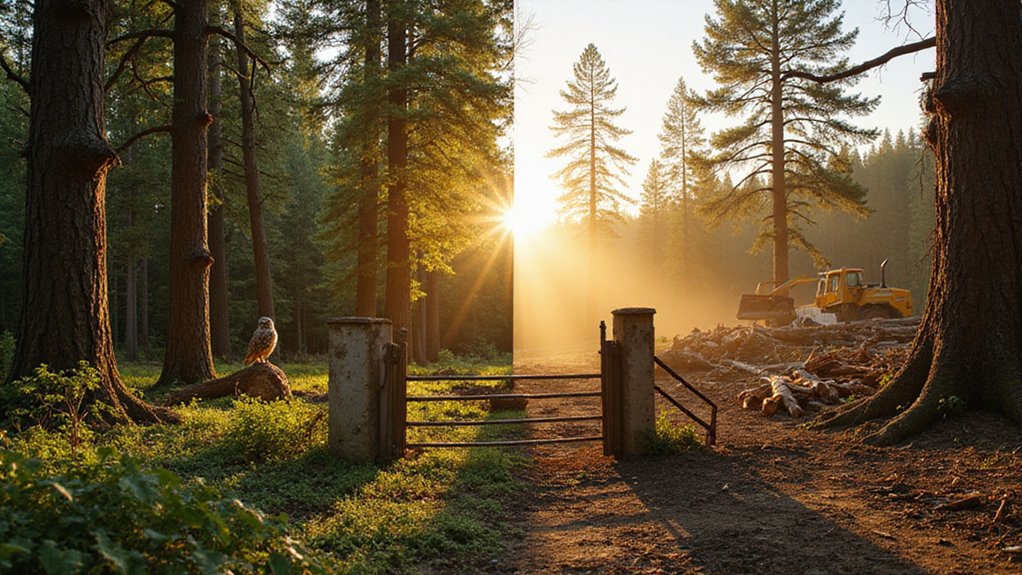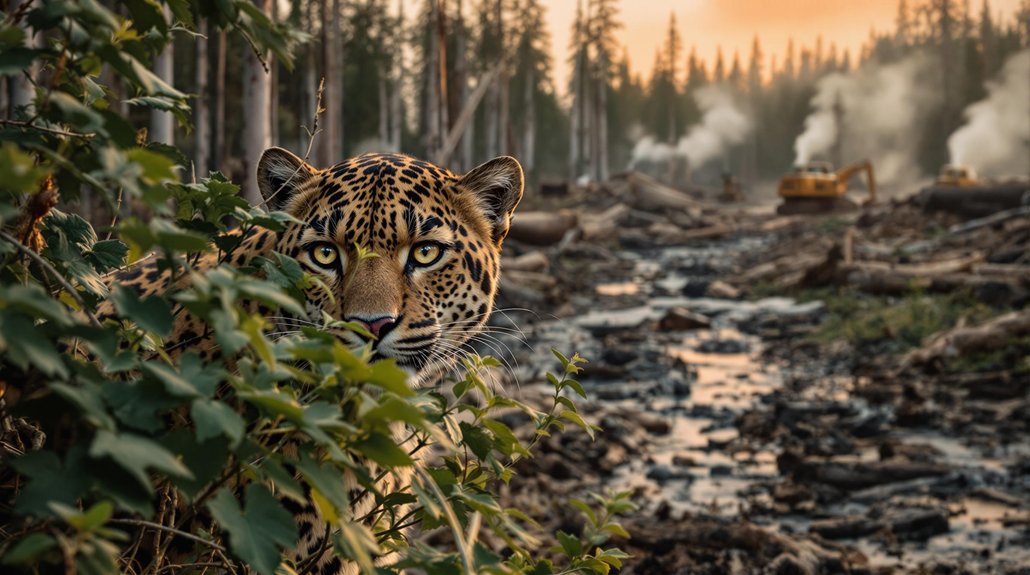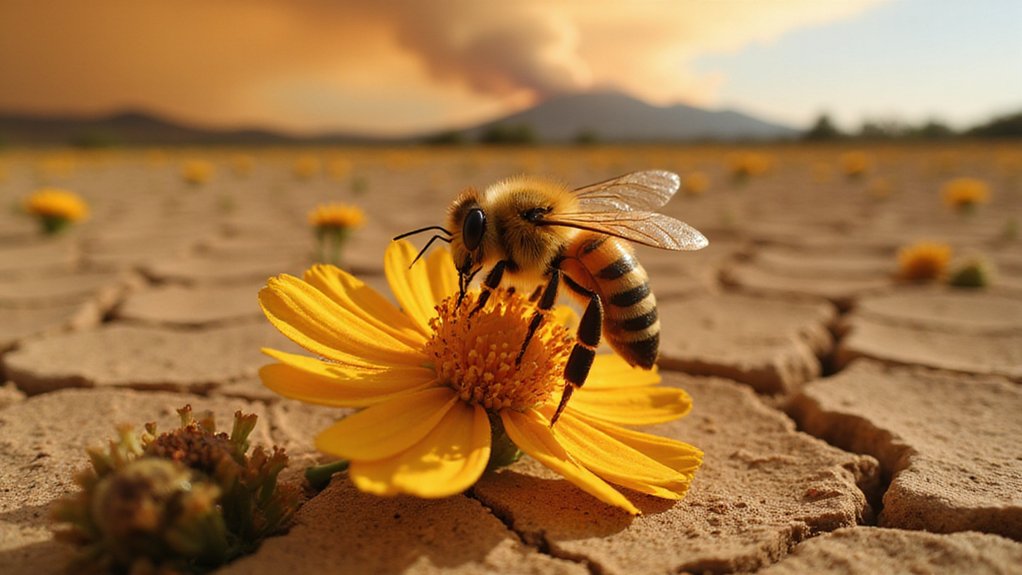Forests worldwide are taking longer to recover from fires since 2010. The percentage of forests needing 6+ years to bounce back has jumped from 11-13% to 16-22%. Climate change is the main culprit, with hotter temperatures and drier conditions hampering tree regrowth. Megafires cause particularly severe damage, with less than one-third of affected areas recovering within seven years. These extended recovery periods threaten countless wildlife species that depend on these ecosystems.
While forests have always faced challenges after wildfires, new research shows recovery times have markedly lengthened since 2010. Scientists have found that the percentage of forests needing six years or longer to recover from fire has jumped from 11-13% before 2010 to 16-22% after 2010. This troubling trend points to a new reality for our forest ecosystems.
Climate change plays a key role in this slower recovery. Hotter temperatures and drier conditions make it harder for trees to grow back after fires. These climate factors also make fires burn hotter and spread wider than before. When forests face repeated fires before they’ve had time to recover, they struggle even more.
The size and intensity of fires matter greatly for recovery. Large, severe fires that burn over 100 square kilometers cause extreme damage to forest structure. They kill more mature trees and create conditions where new seedlings struggle to establish themselves.
Scientists using satellite images have confirmed that recovery within megafire zones is markedly slower than in areas affected by smaller fires. Research shows fewer than one-third of forests recover within seven years after experiencing megafires.
Wildlife faces serious threats from these prolonged recovery periods. The 2019-2020 Australian megafires, for example, severely impacted 290 threatened species. Many lost critical habitat that won’t return for decades. Some species face possible local extinction because they can’t survive while waiting for forests to regrow.
Remote sensing technology has become essential for tracking forest recovery across vast burned areas. By combining satellite data with ground observations, scientists can map exactly how forests are coming back—or failing to come back—after megafires. This monitoring shows many forests remain below their pre-fire density and structure for much longer periods.
Forest managers now face difficult decisions about where to focus restoration efforts. With limited resources and increasingly frequent megafires, they must prioritize the most critical areas for intervention. Similar to how extreme weather events have strained America’s energy infrastructure, these megafires are pushing forest ecosystems beyond their natural recovery capacity. Without action, some forests may permanently change to different ecosystem types as recovery times continue to stretch longer.
